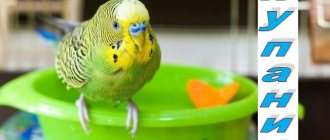For educational purposes, parents often entrust the care of their pet to their child. But children usually don’t know how to care for a hamster correctly. Such a careless attitude often leads to illness or premature death of the animal. Therefore, owners need to study all the information about it and read the recommendations of experienced breeders regarding keeping hamsters.
Benefits of keeping a hamster at home
Buying hamsters for pets has several advantages.
Among them:
- Quick adaptation of the pet to the new environment.
- Easy to care for.
- Strong immune system and resistance to common diseases.
- A normal existence alone.
In addition, a small animal improves the mood of the people living in the house, because his behavior always evokes positive emotions. If you want to breed young individuals, it is enough to buy a specimen of the opposite sex. Watching a male courtship and raising offspring is quite interesting.
The cost of the rodent and accessories for its maintenance is low. Buying a hamster is much cheaper than getting a cat or dog.
The pet is sociable, so it quickly establishes contact with the owner and other family members.
Choice when purchasing
When buying a hamster, it is quite difficult to settle on just one individual, since each of them will cause affection. To understand the true nature and type of higher nervous activity of a rodent before purchasing, you need to start purchasing it in the afternoon, when the animal is in wakefulness mode. In this case, the potential owner will be able to see all the advantages and disadvantages of his pet.
Hamsters are solitary animals and never live in packs; when buying an animal, you should not look for a mate. If you plan to keep more than one individual, it is advisable to take rodents from the same litter, or young ones. This is especially important if the decision is made to purchase two males.
An important point is to study the hamster for diseases. A sick individual is distinguished by the following signs:
- dull, tousled fur;
- noticeably sunken sides;
- paw tremor;
- red eyes and signs of runny nose;
- traces of smeared feces in the anus;
- hoarse breathing;
- general body trembling.
A healthy hamster is always cheerful and cheerful, its body is symmetrical without bumps or depressions, its coat is smooth and shiny, its eyes are clear, and its nose is without signs of a runny nose.
Home improvement
For normal activities, the animal is provided with a spacious and comfortable home. It is allowed to use a plastic house, a traditional cage or a large aquarium.
It is forbidden to place the hamster in a glass jar or small cardboard package.
The house should have enough space for:
- Small storage room.
- Toilet.
- Feeders and drinkers.
- Areas for activity.
- Bedrooms.
The pet will choose how to distribute its housing into zones. Therefore, it is better to give him free rein rather than try to accustom him to the designated places.
The house should be placed in a secluded place, protected from direct sunlight and street noise.
Cage selection criteria
There are several parameters that are taken into account when choosing a suitable home for a pet:
- Dimensions. They are determined taking into account the size of the pet. Small individuals lead an active lifestyle and need a supply of free space for play. The optimal dimensions of a hamster cage are 60 cm in length and 40 cm in width. The height of the structure does not play a special role.
- Material of manufacture. It is not advisable to use wooden cages for keeping rodents, since the animals will constantly gnaw on them and run away. The best solution would be a plastic or metal enclosure.
- Bottom type. It is recommended to choose designs in which the bottom is made in the form of a solid tray with a pull-out system. This will make it easier to clean the surface from dirt.
- Roof. Like the bottom, it is available in a removable format. This option will allow you to quickly remove the animal from the enclosure.
Sawdust
The optimal filler material for the cage is sawdust in granular form. You can also use corn raw material, hay and even plain paper, provided that it does not contain flavorings.
One of the unsuitable fillers is cotton wool. It is dangerous for miniature breeds, which can become entangled in the fibers.
Sawdust for filling the cage.
Drinker and feeder
As a drinking bowl for a hamster, you can use a simple bowl into which water is poured. The advantage of this option is its availability.
However, a rodent can easily turn the container over, being left without nutritious moisture on a hot summer day. In addition, particles of food or filler get inside the bowl, which negatively affects the quality of the liquid.
Automatic nipple drinkers are a more progressive solution. They are made in the form of a plastic cylinder with a steel nipple and two balls. A working system involves the release of water when you press the valve.
A feeder for the grain mixture is an optional attribute for the animal itself. It is more needed for the convenience of caring for the cage and maintaining cleanliness. However, the container in which vegetables, herbs, fruits and liquid food will be stored is irreplaceable.
When choosing a feeder, you should take into account that your pet can turn it over. Therefore, it is better to purchase a product with a heavy bottom made of ceramic or metal. In addition, you can install a hanging version in the cage, similar to bird models.
Drinking bowl for a hamster.
Toys and attractions
Hamsters are active pets that lead an active lifestyle. Therefore, in the enclosure it is necessary to provide a running wheel, a ladder and a slide where the rodent will spend its daily reserve of energy. Some owners buy a walking ball that will allow the animal to walk around the apartment.
If desired, you can design a park by installing labyrinths and obstacles from scrap materials. Paper towel and toilet paper tubes, cardboard and plastic bottles are suitable for this task.
Hamster wheel.
Keeping the house clean
To prevent the appearance of an unpleasant odor in the cage, it is important to keep the bedding, feeders and other accessories clean. Every day it is necessary to get rid of leftover food items that are subject to spoilage.
If you leave rotting fruit or stale meat in the house, this will lead to the development of dangerous microorganisms.
Room temperature
In the room where the hamster's cage is located, you need to maintain a temperature of 20°C. If you allow the indicators to deviate downwards, this will provoke hypothermia and the subsequent death of the animal. But you can’t install an enclosure near heating appliances either.
It is better to place the house in the back of the room and protect it from drafts. If the cage is on a windowsill, then it should be moved to another place for the ventilation period.
Nutrition Basics
Proper feeding of a hamster is the key to its good health and well-being.
The animal’s diet should contain the following foods:
- Specialized dry mixtures. They are produced in the form of formulations based on wheat or barley grains, compressed green granules, dried corn and other ingredients. Such food has a balanced composition, developed taking into account the preferences of animals. Crushed fruit particles are added to the finished mixture, but in limited quantities.
- Plant food. This includes fresh and boiled peas, alfalfa leaves, bluegrass, and also garden vegetables (tomatoes, sweet peppers, pumpkin, zucchini. As for fruits, you can give your pet bananas, apples, pears and grapes.
- Jam, buckwheat, oatmeal, millet. This food is given 2-3 times a week.
- Dried fruits. You can feed your hamster banana chips daily. At the same time, dried dried apricots, prunes and cherries can only be given as a treat. Such products contain a lot of sugar, which poses a health hazard to the rodent.
- Nuts and seeds. They can be given daily. Hamsters respond positively to almonds and pumpkin seeds.
- Flour products. Allowed for use no more than once a week.
There are a number of foods that are best avoided when planning a diet for a hamster. It is forbidden to feed the rodent with spices, which, like spicy or sour foods, cause burns to the mucous membrane of the esophagus, stomach and oral cavity.
Many fruits are good for hamsters, but there are also contraindicated options.
Among them:
- All citrus fruits.
- Kiwi.
Do not feed your hamster fatty or sweet foods, including sweets and honey. Pets are prone to developing diabetes.
The hamster's nutrition must be correct.
What to feed a rodent?
Domestic hamsters are no different in food preferences from their wild counterparts. The main sources of vitamins and nutrients are:
- Cereals
- Legumes
- Nuts
- Herbs
This mixture can be purchased ready-made. Or cook it yourself (it’s not difficult, but it’s cheaper; just below is a video with instructions).
Be sure to include animal proteins in your hamster's menu; Boiled chicken, low-fat milk and egg white (preferably a quail egg) are suitable. Don’t forget about fresh water in the drinking bowl - change it daily, even if the animal hasn’t drank it all.
You can give hamsters fruits and berries. But with caution - it is better to exclude strongly sweet ones (this is especially true for dzungarians - they are prone to diabetes).
Under no circumstances should you feed your hamster “from the table”.
More details about the products and daily routine of rodents are written on this page.
Hygiene procedures
Like other furry pets, the hamster needs hygiene procedures. Long-haired individuals require daily care. It is important to regularly clean the skin from dirt.
Bathing
You can bathe pets only in exceptional cases, using a special shampoo. Water procedures are a stressful situation for animals, since they are quite clean and constantly wash themselves.
It is recommended to place a container with dry sand in the cage, in which the animal will clean its fur. When fleas appear, you should wash your hamster with an antiparasitic agent, applying it with gentle movements to the surface of the body.
Dry cleaning of fur.
Nail care
Particular attention should be paid to the claws. They need to be regularly ground down, because with a sedentary lifestyle and the onset of natural old age, they grow to such an extent that the hamster cannot walk normally.
Toys for grinding teeth
A hamster's teeth require constant care. If the food it eats is not hard enough, the animal’s teeth quickly grow and begin to interfere with its eating.
Overgrown incisors can accidentally damage the rodent's gums, tongue, or lips. As a consequence of this, the animal stops eating and begins to starve. Only a veterinarian can correct this situation, and it can be prevented by giving the animal a variety of things to chew on, preferably wooden or rubber objects.
Diseases: treatment and prevention
With balanced feeding and proper care, hamsters rarely get sick.
But they are not immune from some diseases:
- Cystitis. It is an infectious disease that affects the urinary tract. Symptoms include voluntary urination with blood. To treat and prevent cystitis, your pet is given injections of chloramphenicol. The dosage of the drug is selected at the rate of 5 mg per 100 g of weight 2 times a day.
- Enteritis. It occurs due to the progression of the infection and in 20% of cases leads to the death of the animal. You need to fight the disease with 2 antibiotics: neomycin and tetracycline.
- Scabies. Appears against the background of the activity of scabies mites, which produce oviposition in the upper layers of the skin of hamsters. The pest eats skin dandruff, causing severe discomfort to the animal. Scabies is fought with a 3% SK-9 solution and sulfur ointment. As a preventative measure, use chlorophos at a concentration of 1%. Repeated treatment is performed after 7 days.
Stress management
All rodents are exposed to stressful conditions, so you need to know how to avoid them. Often discomfort is provoked by the pet owner, who often checks the growth of the offspring, causing the female to get angry.
Depression in a hamster also appears when new individuals are added to it. It is better to refuse such a neighborhood, because... animals are able to grow together only from an early age. Adult animals must live in separate cages.
You should not allow a sudden change in your usual daily routine. In addition, lack of food or dirty bedding can trigger stress. Therefore, you should not neglect basic care of the enclosure.
It is forbidden to take the hamster outside, because... this irritates him greatly. Isolate the cage from dogs, cats and small children.
Leave the hamster in peace and quiet for several days after purchase.
Total
As Vladimir Mashkov , “let’s be like a grandmother”: on the day you buy a hamster you will have to spend at least 2,750 rubles. Its annual maintenance will cost you 17,140 rubles with corn as a filler, or 9,940 with hay. And that's the minimum. Now let's remember how much the hamster itself costs. Well, doesn’t he deserve to be called a “budget eater”? Another thing is that the costs, in our opinion, are worth it. The Djungarian hamster Pesha, who posed for this article, belongs to one of our editorial staff. And this employee assures that he does not regret a single penny spent, because in return the gray pet gives his family a sea of positive emotions.
Communication with a hamster
Despite their sociability, hamsters do not like close contact with other pets or people. Therefore, at home you should practice solitary keeping of animals.
There are several rules for communicating with a pet. If you do not follow them, the hamster will be timid and aggressive. During the first days after purchase, it is better to avoid any form of communication with your pet.
It will take him about 7 days to adapt to the voice and smell of the new owner. At this time, you can begin to accustom the animal to its nickname.
Domesticated individuals have the same temperament as their wild counterparts. Therefore, it is forbidden to wake them up, take them from above from the back, or allow sudden movements that will provoke stress and fear of the animal.
All animals love affection.
Ensuring activity
It is forbidden to keep a hamster in a miniature enclosure or a 3-liter jar. This will lead to a deterioration in his health and the development of various diseases.
Proper care involves organizing leisure time. Therefore, pet owners set up entire play complexes, labyrinths and tunnels where the animals spend all their free time.
Walking around the apartment is allowed only in a special ball. If this rule is not taken into account, the hamster may be in mortal danger: falling into a boiling pan, eating a plant containing toxic substances, chewing through an electrical wire, etc. It is quite difficult to catch him in the apartment.
It is forbidden to arrange walks on high surfaces, because there is a risk that the pet will fall.
Is it possible to walk outside
Some owners allow their hamster to roam outside. But pets experience extreme stress from such a change in environment. In addition, such a walk can provoke fatal diseases.
In nature, the hamster is under threat of attack by predators. In addition, the nimble animal can quickly hide in any hole, and after that you will not be able to find it. On the surface of grass and soil there are often dangerous parasites that carry infections.
The nuances of caring for newborn hamsters
When caring for cubs, it is important not to touch them with your hands. This rule applies to both dwarf breeds and other types of rodents. Otherwise, the female will smell a foreign odor and refuse to feed the offspring.
Therefore, zoologists recommend leaving the young with their mother for several days and only replenishing food and water supplies.
After 5-7 days from the moment of birth, the female and her children are transplanted into a new box, and the cage is thoroughly cleaned and the bedding is replaced. In the future, such processing is performed once every 2 days. After the appearance of fur, pets can be introduced to complementary foods.
Hibernation or torpor
Hamsters can hibernate for a variety of reasons. This usually happens due to a sharp drop in temperature and lack of water. The rodent's body becomes hard and cold, and its breathing becomes rare and uneven.
If “wintering” began at an unexpected time or the rodent clearly did not prepare for it (did not make supplies and did not build a nest), be sure to wake it up. Otherwise, he may die from starvation and dehydration. In this case, we are not dealing with natural hibernation, but with torpor. To do this, place the animal in a warm place. For example, you can wrap him in a towel and pick him up. Do not block the access of air, that is, do not wrap the muzzle! Do not place it near heating devices or fire. When he wakes up, he will begin to tremble and stretch. Continue heating until your body temperature rises and your breathing rate returns to normal. Typically, the entire awakening process takes from 30 minutes to an hour.
Analyze what caused the numbness. Maybe the cage was drafty or you didn't give the animal enough food and water? Avoid making these mistakes in the future, as frequent numbness can pose a serious threat to your health.
Useful tips and advice for beginners
Proper maintenance of a hamster comes down to following these recommendations:
- The hamster should be kept alone in a separate enclosure.
- The pet should be isolated from noise and stressful situations.
- The air in the room where the pet lives should not be allowed to become hypothermic.
- You cannot take the animal outside and let it run around on the grass.
- You cannot use food from the table to feed your pet. Fatty, sweet, spicy and sour foods have a detrimental effect on a weak digestive system.











